Flamenco
Talking about flamenco art necessarily leads us to talk about the gypsy people, since both are intrinsically linked; however, talking about their origin is not easy, since they have traditionally been an ahistoricist people and as such, the testimonies about their origin are difficult to find.
Modern historiography, in a large percentage, has accepted that the gypsy people have their origin in India and Pakistan, specifically in the Punjab region; between the XII and XIII centuries, they were expelled from that territory for racial reasons and fled, crossing all of Asia towards the west.
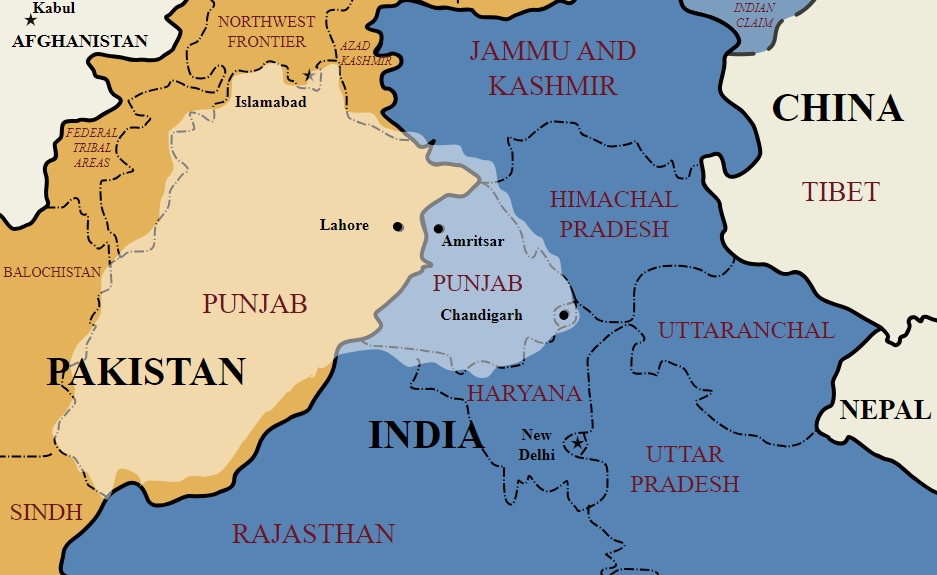
Map of Punjabi region, Ktims, 2006, Wikipedia
On this flight, they arrive in Egypt, and from there, the popular tradition takes its name: Egypt, Egyptians, Gypsies; obviously, it is a traditional and erroneous name, since it gives to understand that its origin is in Egypt when its origin is in India.
From Egypt, the Gypsy people take two forks: the first one leads them to Eastern Europe, passing through Turkey, Bulgaria, Romania and Hungary, and from there they travel all over Europe, settling down. They will be the Zingaros.
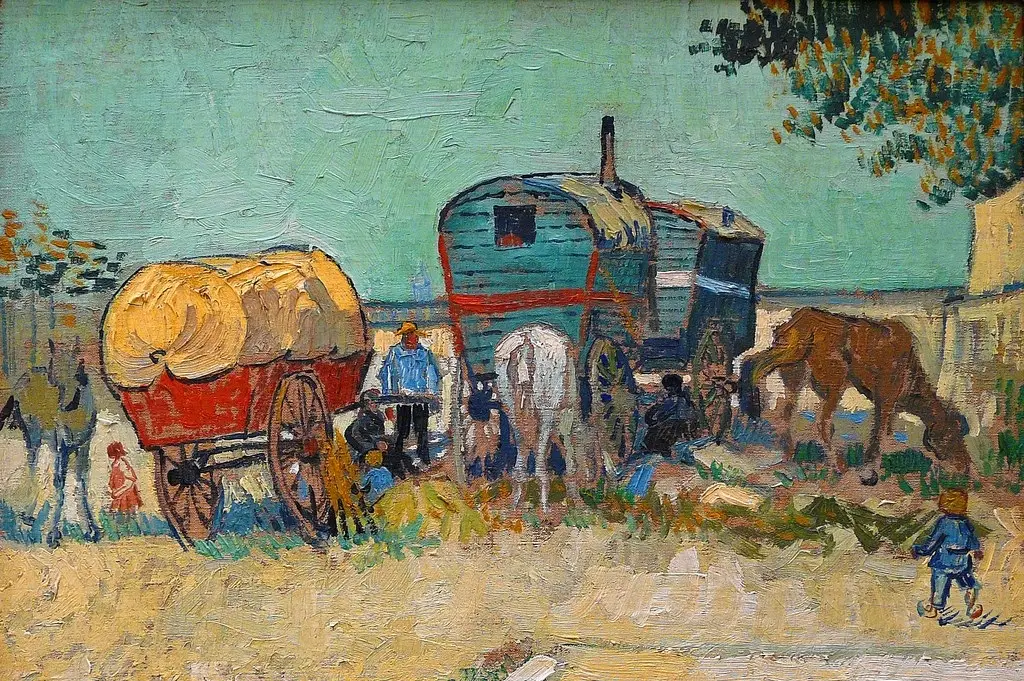
“Las caravanas”, Vincent Van Gogh, 1.888.
The second bifurcation starts in Egypt and crosses the whole of North Africa, passing through places like Libya, Tunisia or Algeria. When they reach Morocco, they will make the leap to the Iberian Peninsula, where they will settle down. They will be known as Calé, i.e. Spanish Gypsies.
They leaped the Iberian Peninsula via the Strait of Gibraltar, and at the end of the 15th century they arrived in Cadiz, the first place where the Gypsies settled in Spain.
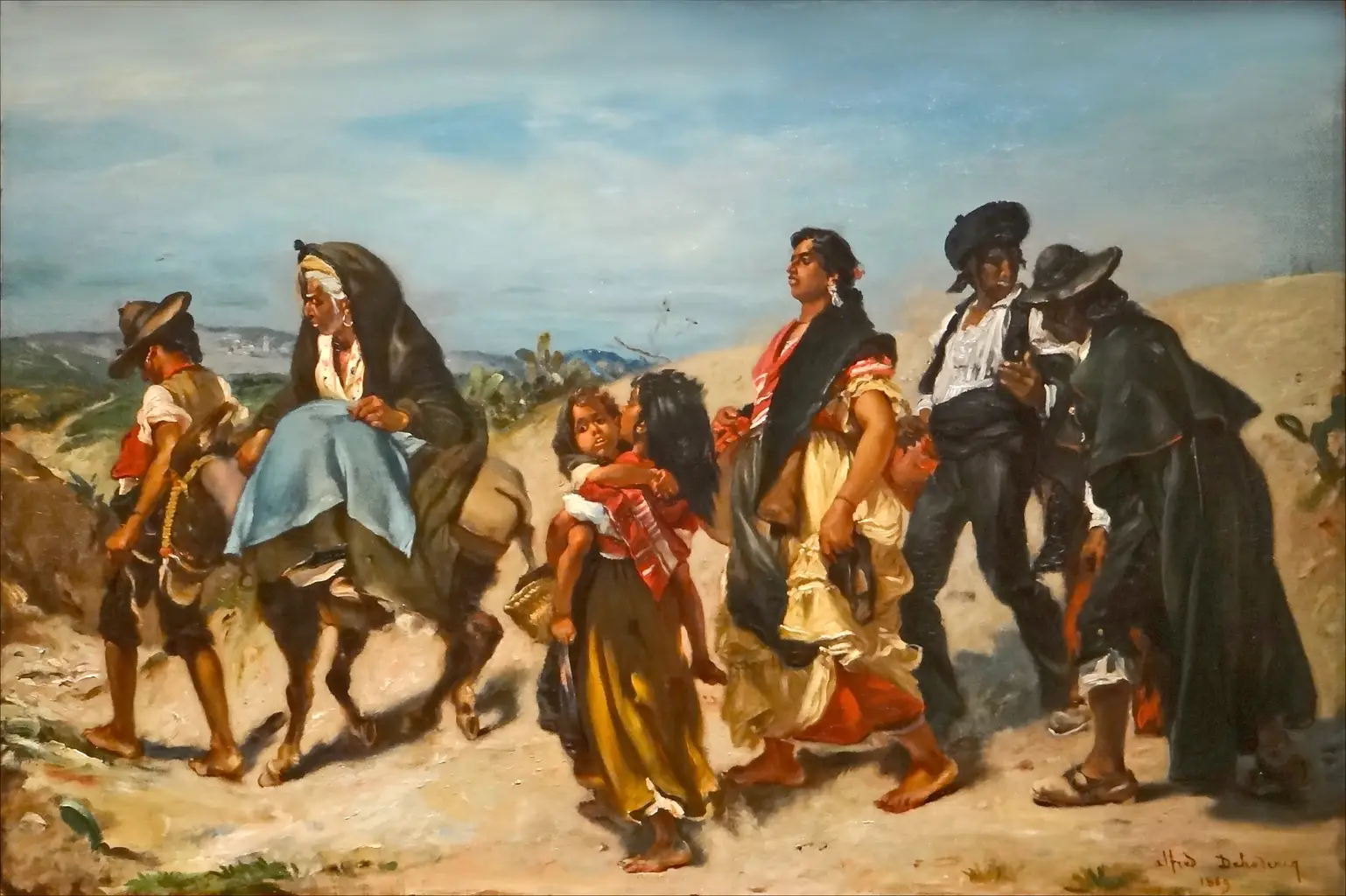
“Gitanos en marcha”, Alfred Dehodencq, 1.860.
From Cádiz, they continued their advance in different directions, with Seville being the next territory they reached between the end of the 15th century and the beginning of the 16th century.
In Seville, they initially remained nomadic, settling near the Guadalquivir River; later, from the 16th century onwards, they were forced to accept a sedentary lifestyle, and so they began to live in the Triana neighbourhood, which at that time was the city’s suburb and poor neighbourhood.
In Triana they would live in the traditional “corrales de vecinos”, sharing life with a multitude of families, and in the humble and collective bosom of these “corrales”, the gypsies would establish flamenco
Therefore, when we talk about Seville, we must mark the Triana neighbourhood as the absolute origin and development of this art.
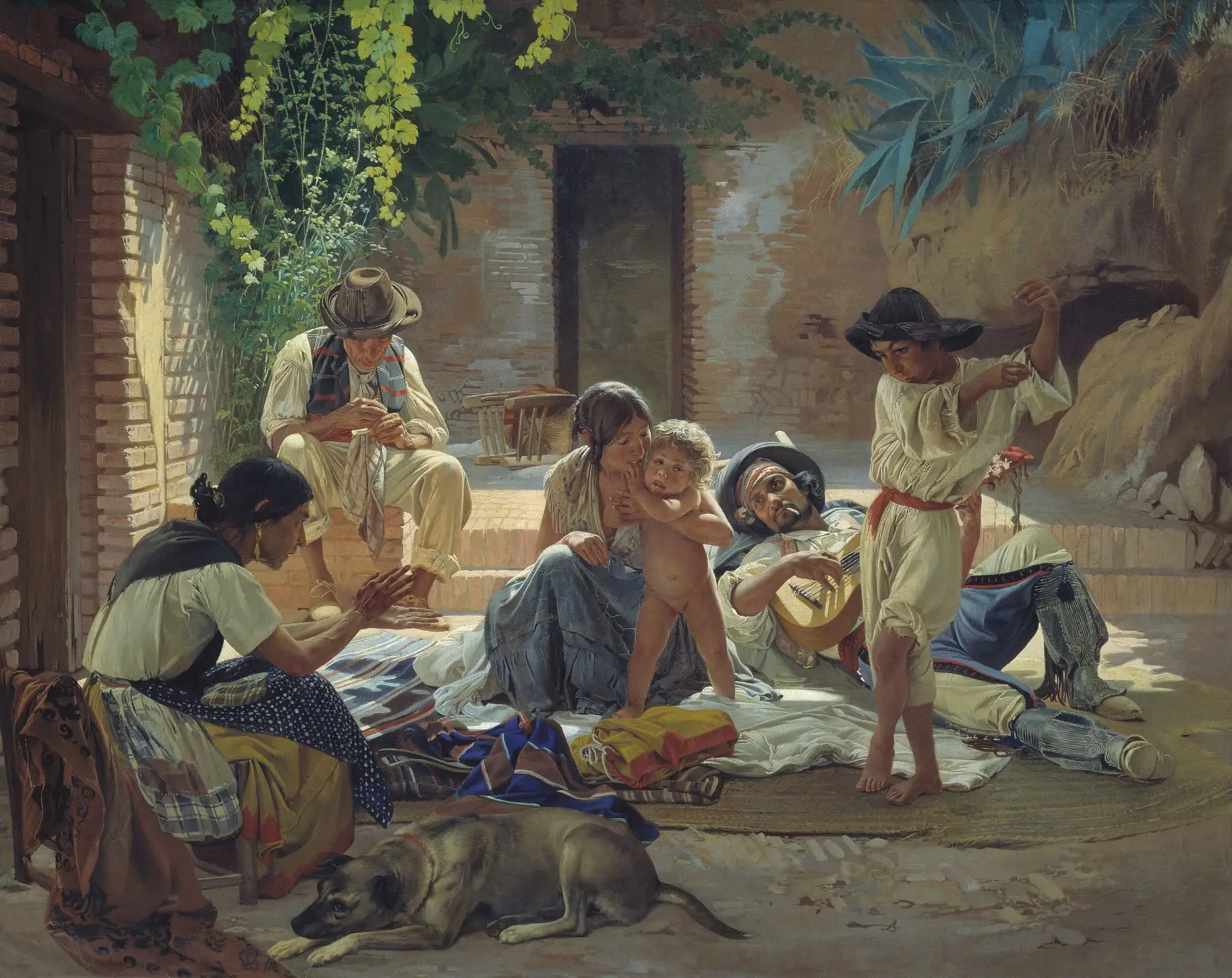
“Familia gitana española”, Evgraf Sorokin, 1.853.
Initially, the flamenco that developed in Seville since the 16th century was characterised by an approach of lament and sadness, with lyrics based on human suffering, marginalisation, and uprooting; it will be known as “Cante Jondo”, and within this branch, we can highlight palos (styles) such as the Soleá, the Fandango or the Toná.
Later on, flamenco progressed towards more joyful songs with a more festive approach. They will be called “Cantes Chicos” or “Cante No Jondo”, and we can highlight the Alegría or the Bulería, as well as the regional songs, among which the Sevillana is an articulating element of the city’s culture.

“Sevilla. El baile”, Joaquín Sorolla, 1.915.
In addition to the singing, flamenco forms a choral ensemble with dancing and guitar playing, which have made it a highly valued artistic asset throughout the world and has been declared Intangible Heritage of Humanity by Unesco.
As a final detail, it should be pointed out that flamenco does not originate as such in Spain, Andalusia or Seville. Actually, it is a type of art that the gypsies have been carrying with them since their expulsion from India between the 12th and 13th centuries; after their flight, they took their art with them and expanded and evolved it, taking for themselves the influences of all the places they passed through, such as the dances of Western Asia or the musicality and voice tones of North Africa.
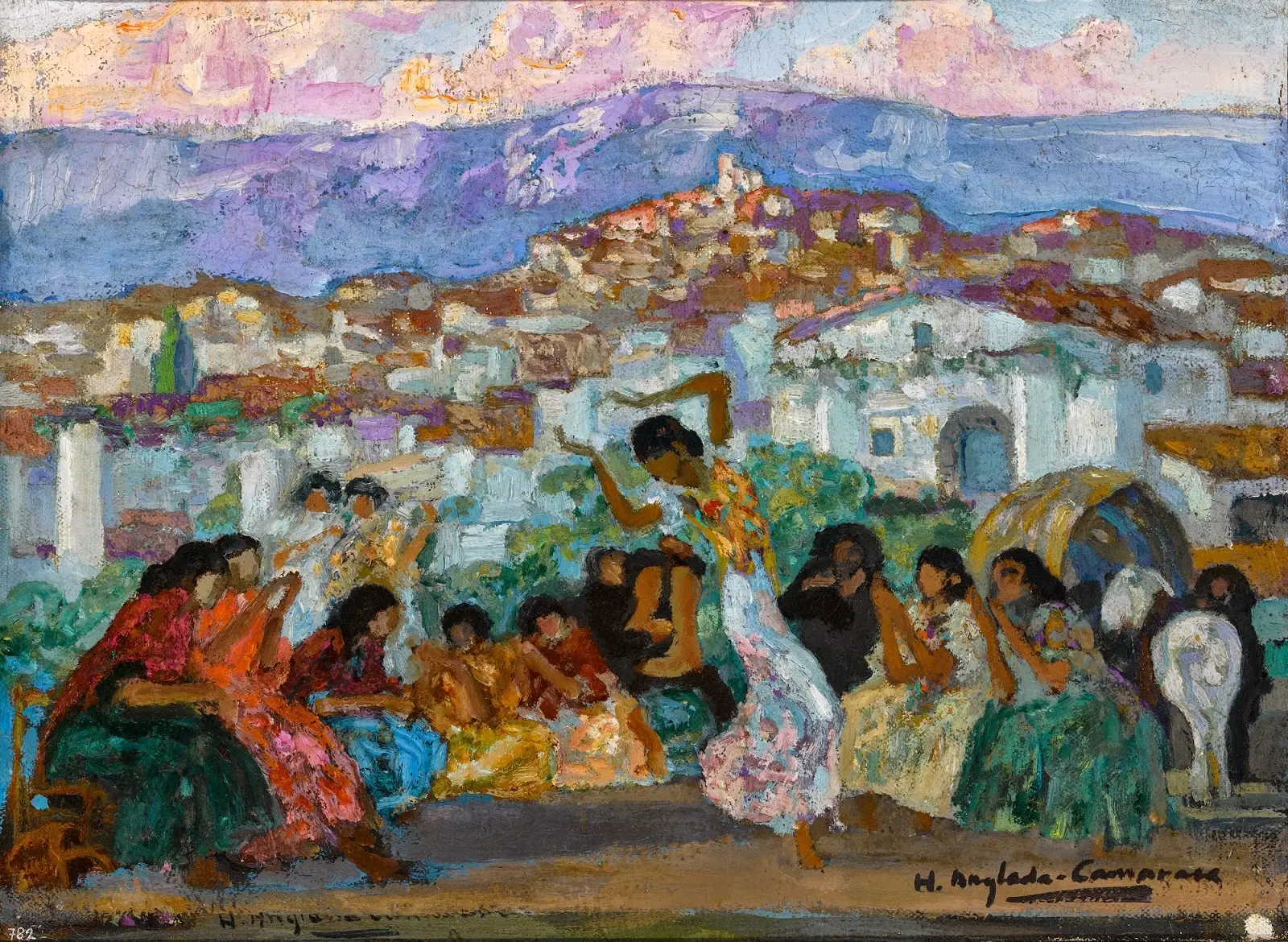
“Baile gitano”, Hermen Anglada Camarasa, c. 1.920.